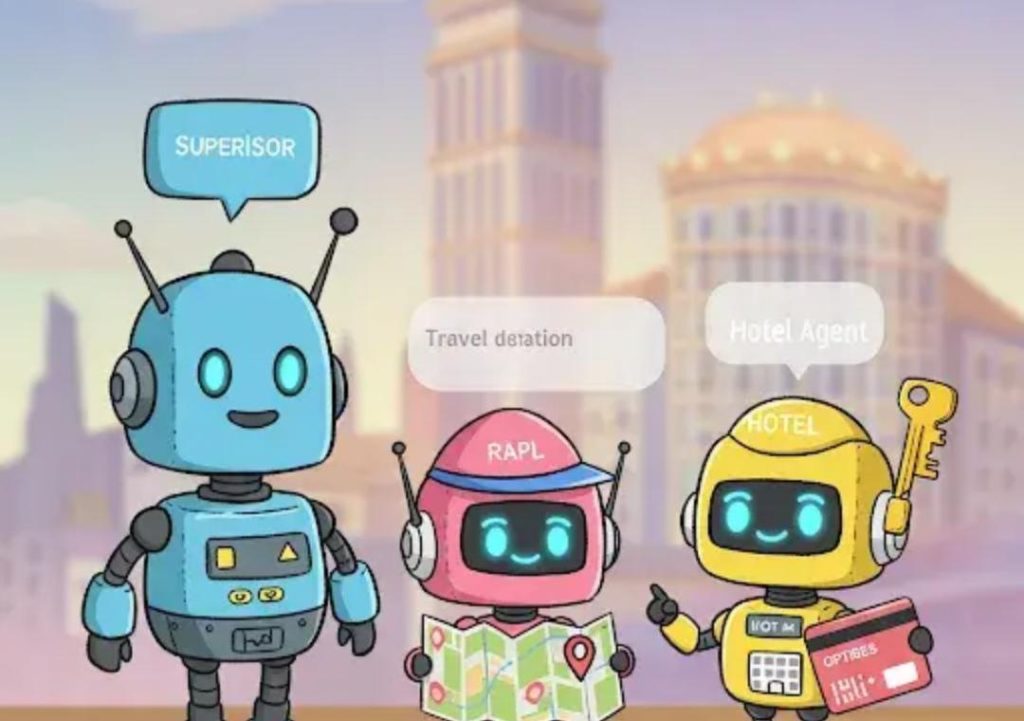
Multi-agent Collaboration Mimics Real Team Dynamics
In today’s fast-paced digital landscape, businesses are constantly seeking innovative ways to streamline their operations, enhance efficiency, and drive growth. One approach that has gained significant attention in recent years is the deployment of multi-agent systems. In this setup, multiple AI agents work together to achieve a common goal, leveraging their unique strengths and expertise to create a powerful and agile team.
In this blog post, we’ll delve into the benefits of multi-agent collaboration and explore how it mimics real team dynamics, allowing businesses to achieve exceptional results at machine speed and scale.
The Limitations of Single-Agent Systems
Traditional single-agent systems, where a single AI agent performs a specific task, have their limitations. For instance, if a single agent is tasked with conducting research, validation, and reporting, it may lack the depth and breadth of knowledge required to complete the task efficiently. The agent may not be able to adapt to changing circumstances, and its output may be biased towards its own narrow focus.
In contrast, multi-agent systems allow different agents to specialize in specific tasks, communicate with each other, and collaborate across tasks. This modular setup enables agents to share knowledge, compensate for each other’s weaknesses, and adapt to changing circumstances, leading to more accurate and comprehensive results.
The Power of Specialization
One of the key benefits of multi-agent systems is the ability to specialize agents in specific tasks. For instance, a research agent can focus on gathering and analyzing data, while a validation agent can verify the accuracy of the findings. A reporting agent can then present the results in a clear and concise manner.
This specialization enables agents to develop deep expertise in their respective areas, leading to higher quality output and increased efficiency. Moreover, agents can be designed to work together seamlessly, ensuring that the overall workflow is smooth and efficient.
Communication and Collaboration
Another critical aspect of multi-agent systems is the ability of agents to communicate and collaborate with each other. This communication can take many forms, including message passing, shared data structures, or even direct interaction.
Effective communication enables agents to share knowledge, coordinate their efforts, and adapt to changing circumstances. For instance, if a research agent discovers new information that may impact the validity of the findings, it can communicate this to the validation agent, which can then adjust its approach accordingly.
Digital Workflows That Mirror Human Teamwork
Multi-agent systems create digital workflows that mirror human teamwork, but at machine speed and scale. This modular setup allows agents to work together to achieve a common goal, just like human teams do.
In a human team, each member brings their unique skills and expertise to the table, and they work together to achieve a shared objective. Similarly, in a multi-agent system, each agent brings its own strengths and weaknesses to the table, and they work together to achieve a common goal.
Benefits of Multi-Agent Collaboration
So, what are the benefits of multi-agent collaboration? Some of the key advantages include:
- Improved Accuracy: By combining the strengths of multiple agents, multi-agent systems can achieve higher accuracy and more comprehensive results.
- Increased Efficiency: Agents can work together to complete tasks more efficiently, reducing the need for manual intervention and minimizing the risk of errors.
- Enhanced Adaptability: Multi-agent systems can adapt to changing circumstances more easily, as agents can communicate and respond to new information in real-time.
- Scalability: Multi-agent systems can be easily scaled up or down to meet changing demands, making them an ideal solution for businesses that need to handle large volumes of data or transactions.
Conclusion
In conclusion, multi-agent collaboration mimics real team dynamics, allowing different agents to specialize, communicate, and collaborate across tasks. This modular setup creates digital workflows that mirror human teamwork, but at machine speed and scale.
By deploying a team of AI agents, businesses can achieve exceptional results, improve accuracy, increase efficiency, and enhance adaptability. As the digital landscape continues to evolve, multi-agent systems will play an increasingly important role in driving innovation and growth.
Learn More
To learn more about building AI agents and multi-agent systems, visit our website at https://www.growthjockey.com/blogs/build-ai-agents.
News Source



